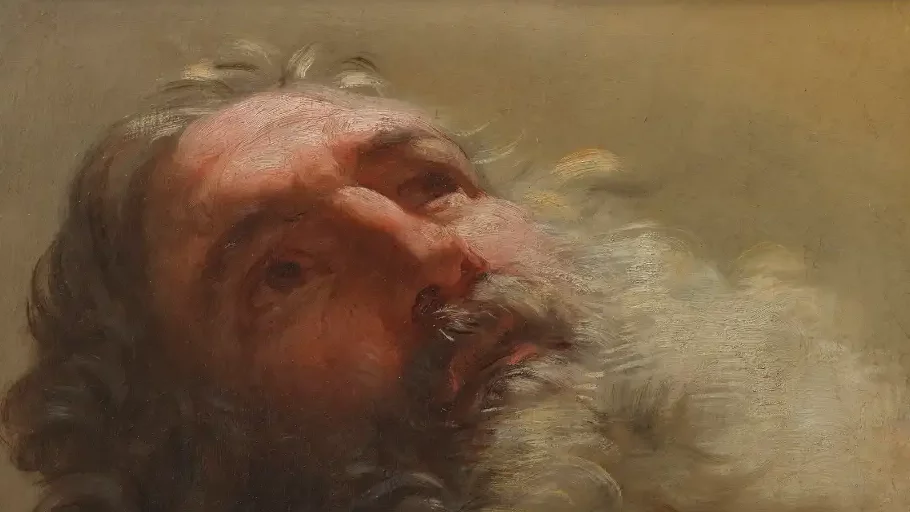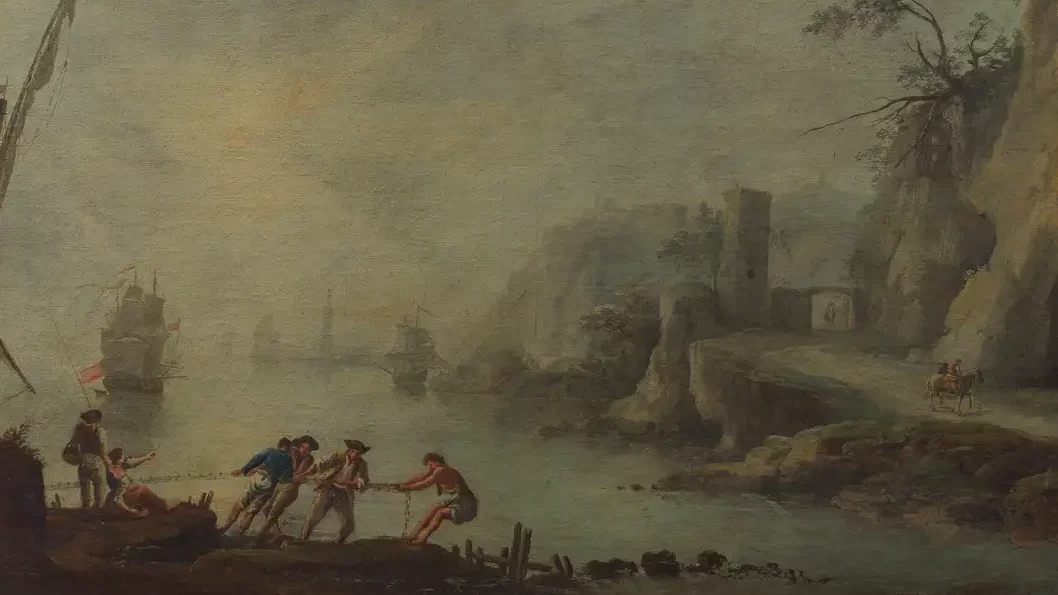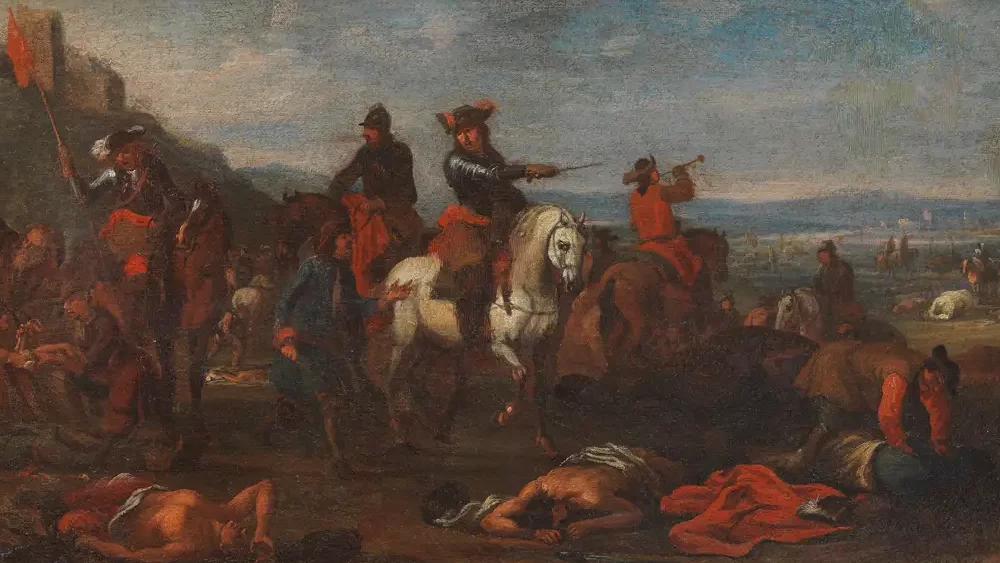Collections

Collection Antonio Bonfigli
Antonio Bonfigli, born in Macerata on 2 May 1806, is a painter and architect, trained under the guidance of Father Atanasio Favini of Coriano (1749-1843), an observant minor adhering to the canons of Neoclassicism. In 1826 he moved to Rome, perfecting himself at the school of Vincenzo Camuccini and Ferdinando Cavalleri.
In the capital he opened his own studio specializing in miniature and in the production of replicas and original paintings for the vast clientele of foreigners and foreigners present in the city. From King Carlo Alberto he was commissioned to restore some paintings in the Royal Palace of Turin and in 1832 he participated in the Exposition of the Linguistic Academy in Genoa. After his return to Macerata in 1860, he decided to donate the paintings from his collection to the city, acquired after his death on 11 February 1865.
The Bonfigli bequest therefore increases the primitive nucleus of paintings then kept in the municipal library and contributes to the creation of the Civic Art Gallery, founded in the years 1866-1867 and made official with a resolution of the City Council on April 25, 1870. The works are arranged in the ” Large Hall “of the Library and to proceed with their arrangement the painter Giuseppe Mancini (Macerata, 1791 – 1881) is involved as an expert.
The donation includes twenty-six paintings, including the “Self-portrait of Carlo Maratta”, a small but precious painting on copper, and a “Madonna” by Giovanni Battista Salvi known as Sassoferrato, as well as two works by Bonfigli himself.

Collection Borgetti Tommaso Maria
The works donated to the municipality of Macerata in 1835 by the Dominican Tommaso Maria Borgetti constitute the first nucleus of the Civic Art Gallery. The legacy includes seven paintings and some drawings dated between the seventeenth and nineteenth centuries, two candlesticks and a table clock from the nineteenth century, objects collected over several years, which testify to the nineteenth-century collecting taste.
Professor of the University of Macerata, Tommaso Maria Borgetti, bibliophile and collector, was a profound lover of art. In 1833 he had already donated 9,176 volumes to the Macerata Library, considerably increasing the book patrimony and thus linking his name, together with that of his brothers Giuseppe and Bartolomeo Mozzi, to the current “Mozzi Borgetti” Civic Library.

Collection Costa Ciccolini Irene
The donation of the Marquise Irene Costa Ciccolini Silenzi reached the town of Macerata in 1956, shortly after her death in that year on 13 January.
The assets were kept in two family residences, in the Ciccolini palace in Macerata and in the Costa villa in Sarnano, and together they constituted one of the most important patrician collections in Macerata. Countess Irene Costa Ciccolini bequeathed to the Municipal Library the ancient family archive, furniture, furnishings and a large collection of paintings that became part of the Civic Art Gallery. Before the entry of the assets, the inventories were drawn up by Amedeo Ricci, emeritus scholar, curator of the library, and former director of the Pinacoteca (from 1940 to 1955), and Libero Paci, historian from Macerata, documentary material now preserved in the Historical Archive of the Pinacoteca in the Municipal Library “Mozzi Borgetti”.
The rich collection of paintings included a considerable number of portraits, mostly depicting ancestors and prominent personalities of the family, genre scenes, landscapes, still lifes, canvases with religious subjects, datable between the mid-seventeenth and the end of the sixteenth century. 700, works coming mainly from the Roman market.
The family home in Macerata is the historic Palazzo Ciccolini, located in the historic center of the city, now a university seat. Inside it preserves a rich 16th century pictorial decoration, in the past traditionally ascribed to the Bolognese artist Pellegrino Tibaldi but today traced back by documentary to the painters Giuliano di Camillo da Cingoli and Leonardo da Borgo Sansepolcro, active in the building site in the years 1551- About 1553 and to which the friezes of some rooms on the noble floor are brought back.
The meetings of the Accademia dei Catenati took place at Palazzo Ciccolini, established in Macerata in 1574, which included various members of the family. Tradition has it that Torquato Tasso, passing through Macerata, in 1587 presented the Liberated Jerusalem to Macerata academics.
Catenati Academy
The Accademia dei Catenati, one of the most important cultural institutions in Macerata, was founded in 1574 on the initiative of Girolamo Zoppo and other Macerata scholars with the aim of promoting literary and eloquence studies, history and poetry. It took its name ‘dei Catenati’ from the coat of arms, which featured a seven-ring chain hanging from the sky. Within the association, each member had his own name and his own company that reflected sides of the personality, character or professional activity of the individual Academician.
Already in the forties and fifties we remember the first literary cenacles, reported as “meetings of notables from Macerata” within an Academy called the Innominati. Later it took the name of the Catenati, whose official foundation took place on 2 July 1574, in the full climate of cultural awakening for ancient and literary studies that would have led to the birth of other academies in Italy.
Gerolamo Zoppio was a teacher of poetics, rhetoric and moral philosophy at the Studio of the Marche city, and most of the characters enrolled were men of letters, jurists and scholars. Torquato Tasso, aggregated on November 17, 1574, is one of the earliest and most notable members ascribed to the Academy. Tradition has it that the poet in 1587 submitted the Gerusalemme Liberata to the Catenates, to get an opinion from them before publishing it.
The coat of arms of the Accademia dei Catenati was painted by Sforza Compagnoni (1584 – 1640), as handed down by nineteenth-century historiography. Cavalier Sforza Compagnoni was born in Macerata on 7 April 1584, he was an Academician of San Luca and was created Knight of Saint Stephen of Hungary in 1626. In 1628 he was admitted to the sacred military order of Malta.
The coat of arms features a chain consisting of seven gold rings that hangs from the sky, a symbol of the conjunction of human and divine things. Below is a landscape between two wings of trees. The company is surrounded by four female figures in classical clothing, with different attributes. The motto is a verse in Greek, translated “those who proceed happy, joyful”. The painting was exhibited in a richly decorated room of Palazzo Ciccolini, the first seat of the Academy.
The Accademia dei Catenati of Macerata is still active, carrying out various cultural activities.
Collection Cesare Filippucci
Cesare Filippucci (1850-1932) was an artist and amateur, collector of works of art, engaged in the agricultural sector. He distinguished himself in the constant attention paid to the assistance sector and in this context he was appointed in 1884 director of the Hospital for Invalids or Hospitalization of Beggars in Macerata.
In contact with the various exponents of the ruling class, Filippucci participates in the cultural life of the city and together with Domenico and Giovanni Spadoni, he was the promoter of the Museum of the Risorgimento established in 1905, to which he donated relics, prints and weapons. Over the years he had collected a conspicuous artistic heritage, donated to the municipal library and to the art gallery of his city of him.
The Filippucci legacy includes archaeological finds, ethnographic material, plaster casts by the sculptor Giuseppe De Angelis and about 170 paintings, drawings and prints. The collection of paintings includes works from the 17th and 19th centuries of various subjects, portraits, landscapes and religious themes.